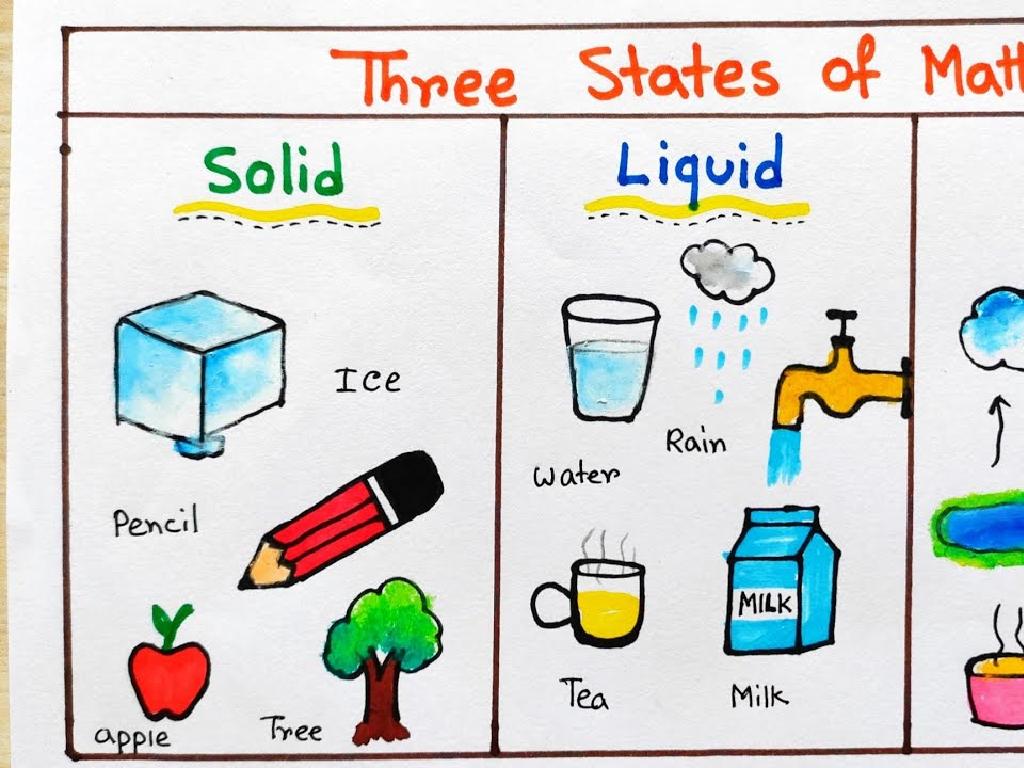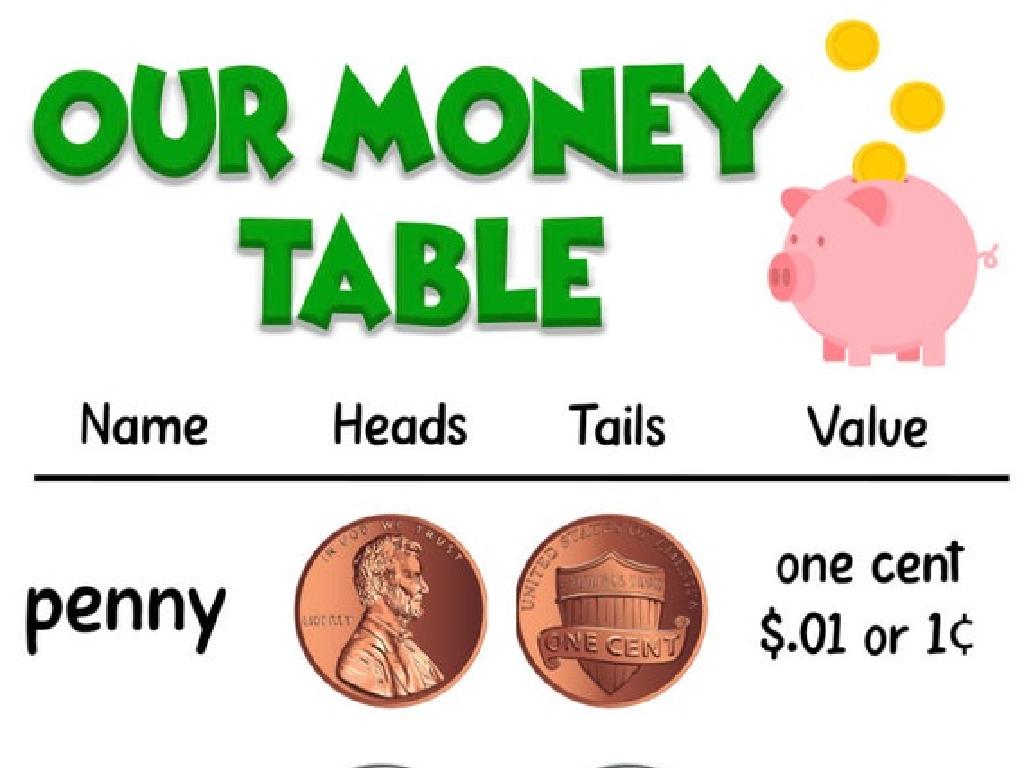Identify Proportional Relationships From Graphs And Equations
Subject: Math
Grade: Seventh grade
Topic: Proportional Relationships
Please LOG IN to download the presentation. Access is available to registered users only.
View More Content
Welcome to Proportional Relationships!
– Define proportional relationships
– A relationship where two quantities increase at the same rate
– Real-life proportionality examples
– Recipes in cooking, currency exchange rates
– Proportionality in daily life
– Budgeting allowance, comparing distances
– Understanding graphs and equations
– How to identify constant ratios from graphs and create equations
|
This slide introduces the concept of proportional relationships, a fundamental aspect of mathematics that students encounter in various real-life situations. Begin by defining proportional relationships as situations where two variables change at a constant rate relative to each other. Provide relatable examples such as recipes, where ingredients are mixed in proportion, or currency exchange, where money is converted at a consistent rate. Discuss how understanding proportions is useful in everyday life, like managing money or comparing distances. Finally, explain how proportional relationships can be represented visually in graphs and algebraically in equations, emphasizing the importance of recognizing constant ratios. Encourage students to think of additional examples and to visualize proportionality in their daily activities.
Understanding Proportional Relationships
– Define proportional relationship
– A relationship where two quantities increase at the same rate.
– Explore constant rate of change
– If y/x is constant, the rate of change is constant.
– Identify proportional vs non-proportional
– Graphs: straight line through origin vs not through origin.
– Practice with real-world examples
– Compare examples like speed/distance and recipe adjustments.
|
This slide introduces the concept of proportional relationships, a fundamental component of algebra and a key concept in 7th-grade math. Begin by defining a proportional relationship as a scenario where two quantities increase or decrease at the same rate. Emphasize the constant rate of change, which means the ratio of one quantity to another is constant. Use graphs to visually distinguish between proportional and non-proportional relationships, noting that proportional graphs are straight lines that pass through the origin. Provide real-world examples to solidify understanding, such as the relationship between speed and travel time, or ingredient amounts in recipes when adjusting for more or fewer servings. Encourage students to think of their own examples and to practice identifying proportional relationships in various contexts.
Proportional Relationships in Graphs
– Characteristics of proportional graphs
– Straight line through the origin (0,0)
– Identifying proportionality in graphs
– Constant ratio between variables indicates proportionality
– Practice graphing proportional relationships
– Use given ratios to plot points and see if they form a straight line
– Real-world proportional examples
– Examples: speed vs. time, recipe ingredient adjustments
|
This slide aims to help students recognize proportional relationships when presented in a graphical format. Emphasize that graphs of proportional relationships will always be straight lines that pass through the origin, indicating a constant ratio between the two variables. Show how to check for a constant ratio by picking two points and dividing the y-coordinate by the x-coordinate to see if it remains the same. Provide graphing exercises with sample ratios to plot on a coordinate plane, reinforcing the concept that the resulting graph should be a straight line through the origin. Finally, connect the concept to real-world scenarios, such as maintaining a constant speed over time or scaling a recipe up or down, to demonstrate the practical application of understanding proportional relationships.
Proportional Relationships in Equations
– Proportional equations: y = kx
– Equation form where k is the constant rate of change
– Constant of proportionality (k)
– k represents the rate at which y changes with respect to x
– Graphs to equations conversion
– Use points on the graph to find k and form the equation
– Real-world proportionality
– Examples: recipes, currency exchange
|
This slide introduces students to the concept of proportional relationships in equations, focusing on the standard form y = kx, where k is the constant of proportionality. It’s crucial for students to understand that k represents the consistent rate at which y changes in relation to x. When converting graphs to equations, students should practice identifying two points on the line to calculate the slope (k) and then use it to write the equation. Relate the concept to real-world scenarios such as following a recipe or converting currency to make the lesson tangible. Encourage students to work through several examples to solidify their understanding.
Working with Proportions
– Create tables from equations
– Use equations to fill in tables, showing proportional relationships between variables.
– Find constant of proportionality
– The constant ratio between two variables in a proportional relationship; find it in tables.
– Step-by-step practice problems
– Work through example problems to apply what you’ve learned about proportions.
– Understanding through application
|
This slide aims to solidify the students’ understanding of proportional relationships by translating equations into tables, which visually represent the relationship between variables. Emphasize the importance of the constant of proportionality, which is the unchanging value that relates the two variables in a proportional relationship. Provide practice problems that guide students through the process of identifying proportional relationships and finding the constant of proportionality. Encourage students to explain their reasoning for each step to deepen their comprehension. The final bullet is a reminder that understanding comes from applying these concepts to solve problems.
Class Activity: Discovering Proportions
– Group activity on real-world proportions
– Each group gets a unique scenario
– Analyze and determine proportionality
– Consider constant rates or ratios in your scenario
– Present findings to the class
|
This activity is designed to help students apply their understanding of proportional relationships to real-world contexts. Divide the class into small groups and provide each with a different scenario that could involve proportional relationships, such as recipes, map scales, or speed and time. Students will analyze their given scenario to determine if the relationship between quantities is proportional, meaning it has a constant rate or ratio. After the analysis, each group will present their scenario and explain their reasoning for whether it is proportional or not. As a teacher, prepare to guide them through the process and provide hints if necessary. Possible scenarios could include comparing ingredients in a recipe, distances on a map to real-life distances, or the relationship between time and distance traveled at a constant speed.
Understanding Proportional Relationships: Recap & Homework
– Recap: Proportional relationships
– A constant rate between two variables, represented by y = kx
– Why proportionality matters
– Key concept in math, science, and everyday life
– Homework: Real-world proportions
– Find and describe a proportional relationship from your daily life
– Be ready to discuss your examples
|
As we conclude, remember that proportional relationships are all about the constant rate of change between two variables. This concept is not just a math topic; it’s a fundamental principle that applies to many real-world situations, such as cooking recipes or calculating speed. For homework, students are tasked to find an example of a proportional relationship in their home or community, like ingredients in a recipe or distance traveled over time at a constant speed, and describe it. This will help them connect classroom learning to the world around them. Encourage students to be creative and ready to share their findings in the next class, fostering a discussion on how math is relevant in everyday life.





